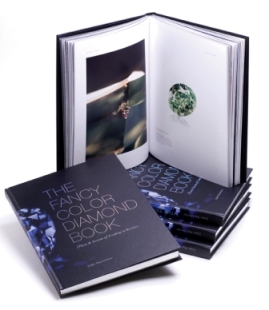Investing in Diamonds
August 22, 12
By
 Eden Rachminov |
As more baby-boomers grow restless over meager nest-egg returns, fueled by a sluggish economy, a depressed real estate market and a 0% interest environment, they have discovered alternative asset classes as a potential means to diversify small portions of their investment portfolios. Alongside gold, some savvy investment professionals believe that diamonds, especially unique and rare fancy color diamonds, are the next asset class to penetrate global portfolios. Consequently, I believe the diamond investment trend is not fading away anytime soon.
Nevertheless, investors who seek high returns should consider the following assumptions: first, Diamonds do not constitute a homogeneous asset class; some categories of diamonds may produce extraordinary returns, whereas others may disappoint. Second, the traditional and not-so-sophisticated buy-hold-sell investment model will usually fail to achieve high returns. This fiercely competitive practice has eroding profitability for the most part, and margins are simply not there.
Addressing the first assumption, most diamond categories are (almost) commoditized. In the coming years, with further developments in technology, and a continued tendency towards full supply-chain transparency, most diamonds will offer modest returns as investments. The most vivid exception to the margin rule is fancy color diamonds. The reason for that is their rarity and unique characteristics.
Only a miniscule fragment of diamonds possesses natural color and is referred to as a fancy color diamond. Fancy color diamonds are purchased almost exclusively for the intensity and distribution of the diamond's color, as opposed to colorless diamonds, where the 4 Cs are the primary indications of value. As a rule, the more intense the color, the rarer and more valuable the diamond is.
 |
They add that these rare diamonds have proven to be resilient to adverse economic conditions with only marginal price declines occurring during recent general economic downturns. A declining supply of these diamonds is one reason for the durable prices, as diamond mines are yielding fewer of these stones each year and no new significant diamond mines with notable fancy color diamond production have been discovered of late.
Another important driver for price appreciation is the increasing demand for rare fancy color diamonds due to the worldwide demand for tangible asset investments and the growing number of high net-worth individuals, specifically in
Typically, finding rough fancy color diamonds is random and impossible to predict. Due to the difficulties in mining these stones, projected rough fancy color diamond supply is expected to remain unchanged or to decrease slightly for years to come. It is unlikely that the primary supply picture for rare fancy color diamonds will improve before the end of the decade.
On the demand side, as rare fancy color diamonds typically retail prices surpassing $1 million, their consumer profile is meaningfully different from that of a typical diamond buyer. In 2011, the typical end-consumer who purchased a rare fancy color diamond was a male shopping independently or accompanied by his partner. This consumer is referred to as an Ultra-High-Net-Worth-Individual (UHNWI), frequently a jewelry and diamond connoisseur that has purchased important white and/or color diamonds in the past and understands the unique proposition of the fancy color diamonds. Increasingly, this consumer is purchasing the item for investment purposes or price appreciation potential among other reasons. One of the most intriguing characteristics about this consumer is that more often than not he would be Asian.
Any investment vehicle would have to develop a proprietary route to market for its diamonds, to secure a consistent, high-margin sourcing and distribution platform. Typically, this is achieved through long-term partnerships that link stakeholders from different parts of the global supply chain. The obvious need for cooperation will provide significant value added to the diamond industry, in tearing down trade barriers and promoting transparency and further trust.
A final observation: Like with any other hyped asset class, investors may come across numerous individuals and investment vehicles that promise high returns and meaningful upside potential when investing in diamonds. Some of these outfits are highly professional and credible, others may not be. A wise investor should insist on looking at an audited and proven performance track record, and conduct a proper due diligence process before investing, as they would do with any mutual fund or ETF.
Eden Rachminov is principal of Rachminov Diamonds 1891 and author of The Fancy Color Diamond Book, considered to be the diamonds industry’s primary tool and reference guide for fancy color diamonds.